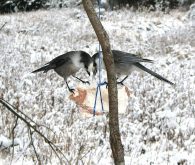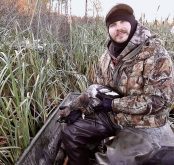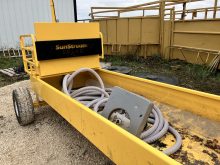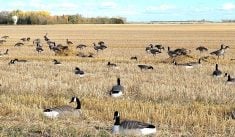This is as big as they get.”
Standing in one of several arenas repurposed for Brandon’s Royal Manitoba Winter Fair this March, Jessica Riach was obviously getting used to repeating some version of this statement. On her arm perched Bindi, a four-year-old fully grown burrowing owl, standing shorter than a hardcover book.
The pair were there as ambassadors for the Manitoba Burrowing Owl Recovery Program, an organization dedicated to replenishing the species in the far corner of southwestern Manitoba.
Read Also
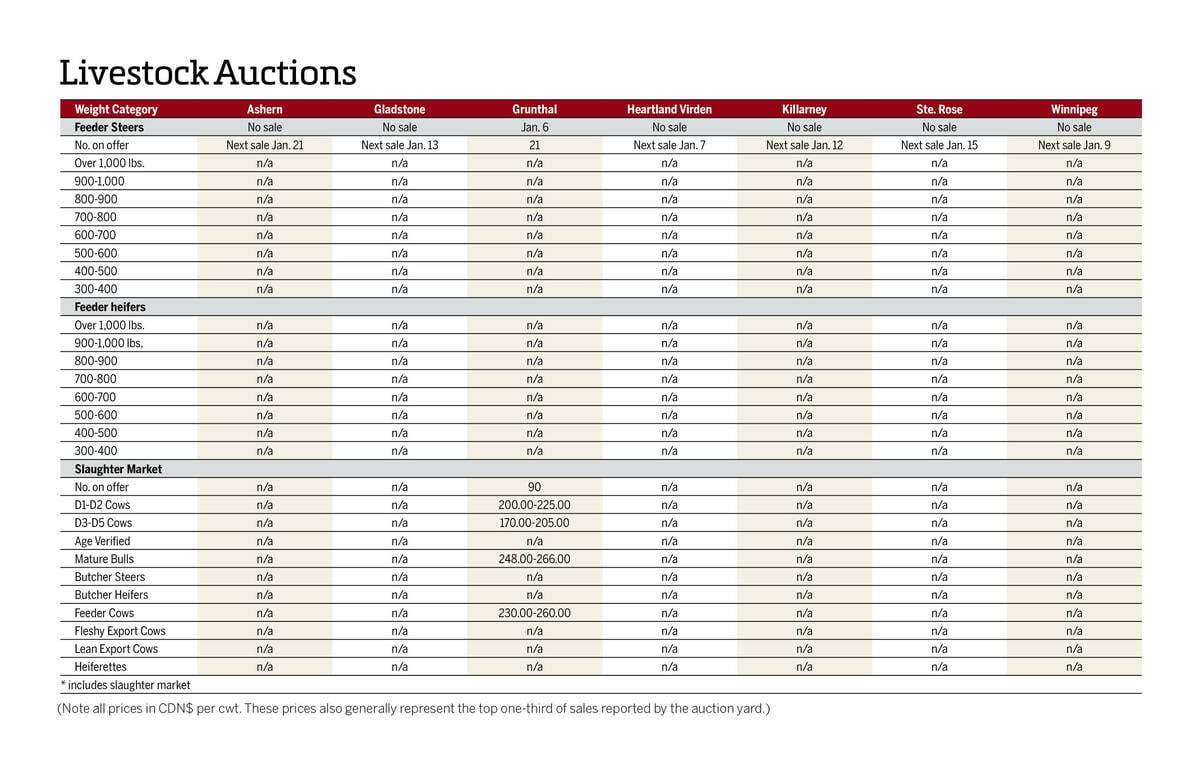
Manitoba cattle prices Jan. 6
Grunthal was the first Manitoba livestock auction mart to kick off 2026 cattle sales in early January.
Why it matters: Burrowing owls have become a rare sight in Manitoba as grasslands and other native habitat acres diminish.
Every year, the program releases a handful of breeding pairs, in the hope that their young will add numbers to the critically diminished species.
It has worked with more than 60 landowners in the region over the course of a decade. More than 350 artificial nests have been built, 72 pairs released (64 of which built nests) and 166 owlets fledged.

The species is listed as endangered, both nationally and under Manitoba’s Endangered Species and Ecosystems Act. According to the Manitoba Conservation Data Centre, one of a network of Canadian and U.S. databanks that track wildlife numbers, the breeding population of burrowing owls ranks as “critically imperiled” provincially, the rarest classification in the system.
That ranking is matched by “imperiled” or “critically imperiled” status for the birds on a national scale.
The sliver of Manitoba now considered burrowing owl habitat is a remnant of a much larger range. According to Manitoba Wildlife Branch materials, the small ground owls could historically be found from southern Manitoba to the Interlake and Parkland north to Dauphin, and as far east as Winnipeg.
In the early to mid-1900s, it was estimated that Manitoba had more than 100 breeding pairs each spring. Starting in the early ’80s, those numbers sharply declined. By the late 2000s, conservation experts estimated the number of breeding pairs in single digits.
It was around this point that the recovery program entered the scene.
The reasons behind the owls’ population decline are many, according to program data. Loss of habitat is a big one. Then there are incidents with vehicles, predation or losses during migration. Little is known about migration, even though every released owl is banded for identification.
Owls might be killed by pesticides, since their favoured prey includes insects and rodents, or there might not be enough burrows, since the species often adopts old ground squirrel or badger dens rather than digging from scratch. Fewer rodents due to human interference means fewer ready-made homes for owls.
The beef connection
The recovery program recently joined forces with Manitoba Beef Producers, which helps fund operations. The monetary tie between the two organizations makes sense. Beef producers represent a target land base for owl recovery efforts.
“[The owls] require open-grazed pastureland as their habitat and beef producers already kind of have that,” Riach said.

The partnership also gives the program greater access to the private landowners.
For beef producers, grassland conservation is both good business and good public relations.
The organization has long partnered with programs like Species at Risk Partnerships on Agricultural Lands, which is run through Environment and Climate Change Canada. Bird species are featured heavily in that program, which offers incentives for farmers to adopt management practices to enhance grassland habitat.
The producers’ group is actively promoting the burrowing owl program among southwestern beef farmers.
“It’s such a good way to show the benefits of beef on the landscape to the people who need to see it,” said Melissa Atchison, MBP’s research and extension specialist.
“We understand, as producers, the good things that we’re doing in terms of population ecology and wildlife habitat maintenance, but when it comes straight from the conservation group, it really has a lot more power in the eyes and ears of the public.”
Another bite at the apple
Manitoba’s burrowing owl recovery program marked the first reintroduction effort since the mid-‘90s. A previous program had released captive-born owls for nine years, starting in 1987, but was eventually retired after few owls returned.
Unlike other programs in Canada, breeding pairs have already “successfully nested and fledged young” by the time they hit the wild.
“By releasing only successful breeding pairs, we hope to increase nest-site philopatry, which is the tendency of an adult to return to same area to breed where they did the year previous,” the program’s website states.

It also “holds back” some of the young, to reduce competition for their siblings that remain wild. Those owls are reintroduced in the following year’s breeding pairs.
Attempts are made to keep the breeding pair together by only releasing them once a nest has three eggs.
All nests are carefully monitored and the team supplements diet for about two weeks after eggs hatch, which is when young start to explore outside the nest.
The goal is to restore Manitoba’s burrowing owl population to healthy, self-sustaining numbers of 23-25 breeding pairs.
On the way, they’re doing a lot of research. The program has been collecting data on the relationship between clutch size and productivity.
Outreach is another aspect. In addition to Riach’s appearance at the Royal Manitoba Winter Fair, the program offers school and community visits to educate the public on the burrowing owl and grassland conservation.
It also makes special effort to talk with potential landowner partners. These one-on-one meetings can include a land survey (including any past burrowing owl activity) and information on setting the species up for success on that land.
Slow gains
Manitoba’s dry spell, culminating in 2021, was bad news for farmers, as were grasshoppers that plagued many fields. But the burrowing owls were well-fed and right at home. In recent years the program has seen an increase in wild burrowing owls that return to Manitoba.
“Last year, we actually had three wild owls show up on our release sites, which we’ve never had before,” Riach said. “So that is amazing.”

One of those wild birds matched with a female from the release program, and seven eggs were hatched. The three were not banded, and so they did not come from any of releases.
However, the program has not seen many of their released birds return.
“It’s really hard to say, once they leave the release site, what happens between here and wherever they go,” Riach said. “They do migrate down to the Gulf of Mexico area. It’s a really long migration. Between here and there, anything could happen. We don’t really know why they don’t come back to the same release site.”
Those birds could easily be in Manitoba, she noted, just not on the specific pasture that the program is watching.
That echoes many of the problems from the 1987-1996 program. It saw 181 nests and, while most did have young, only four per cent of those owlets were seen again in a following year and only 31 per cent of the introduced adults came back.
It was thought that losses may have occurred during migration or at the birds’ overwintering site.
Programs in Canada and the U.S. are trying to track the owls during migration, although finding GPS technology compatible with such small birds and such a long journey has been a challenge.
As long as the birds are somewhere, however, the program still counts it as a win, considering their national endangered status and the spillover benefit to other species that rely on grasslands.
“We could still be increasing the population. They just might be not necessarily coming back to this area,” Riach said.




